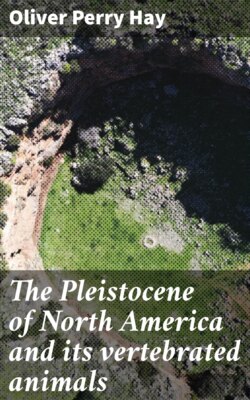Читать книгу The Pleistocene of North America and its vertebrated animals - Oliver Perry Hay - Страница 40
PENNSYLVANIA.
Оглавление(Map 3.)
1. Port Kennedy, Montgomery County.—From the noted bone cave at Port Kennedy a number of species of Megalonyx have been described. The presence of this genus was first announced by Wheatley (Amer. Jour. Sci., ser. 3, vol. I, p. 384). Cope, in 1899 (Jour. Acad. Nat. Sci., Phila., vol. XI, pp. 211–219), admitted the occurrence of 4 species, Megalonyx wheatleyi, M. loxodon, M. tortulus, and M. scalper. It must be left to future investigations to determine the status of these species. M. jeffersonii was not recognized by Cope in the materials found in the cave. Of M. loxodon, only a single upper canine molar was found. Of M. wheatleyi, numerous specimens were secured, including considerable parts of crushed and decayed skulls. M. tortulus was represented by a considerable number of teeth; M. scalper by only a single “canine-molar.” On page 312 will be found a list of the species of vertebrates associated with these sloths. Of Mylodon, Wheatley (op. cit., p. 384) had a single ungual phalanx which Cope (op. cit., p. 210) thought belonged probably to M. harlani.
2. Frankstown, Blair County.—Remains of an undetermined species of Megalonyx have been reported from a bone cave at this place by Dr. W. J. Holland (Ann. Carnegie Mus., vol. IV, 1908, p. 231). The associated species are listed on pages 321–322.
